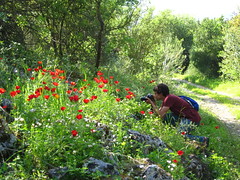 Last week was packed with opportunities to learn more about Israeli culture with the Oranim program. We stayed in Kibbutz Ramat HaShofem, one of the first kibbutzim set up in Israel. The original kibbutz system was set … Continue Reading ››
Last week was packed with opportunities to learn more about Israeli culture with the Oranim program. We stayed in Kibbutz Ramat HaShofem, one of the first kibbutzim set up in Israel. The original kibbutz system was set … Continue Reading ››
Experiencing Israeli culture
 Last week was packed with opportunities to learn more about Israeli culture with the Oranim program. We stayed in Kibbutz Ramat HaShofem, one of the first kibbutzim set up in Israel. The original kibbutz system was set … Continue Reading ››
Last week was packed with opportunities to learn more about Israeli culture with the Oranim program. We stayed in Kibbutz Ramat HaShofem, one of the first kibbutzim set up in Israel. The original kibbutz system was set … Continue Reading ››




